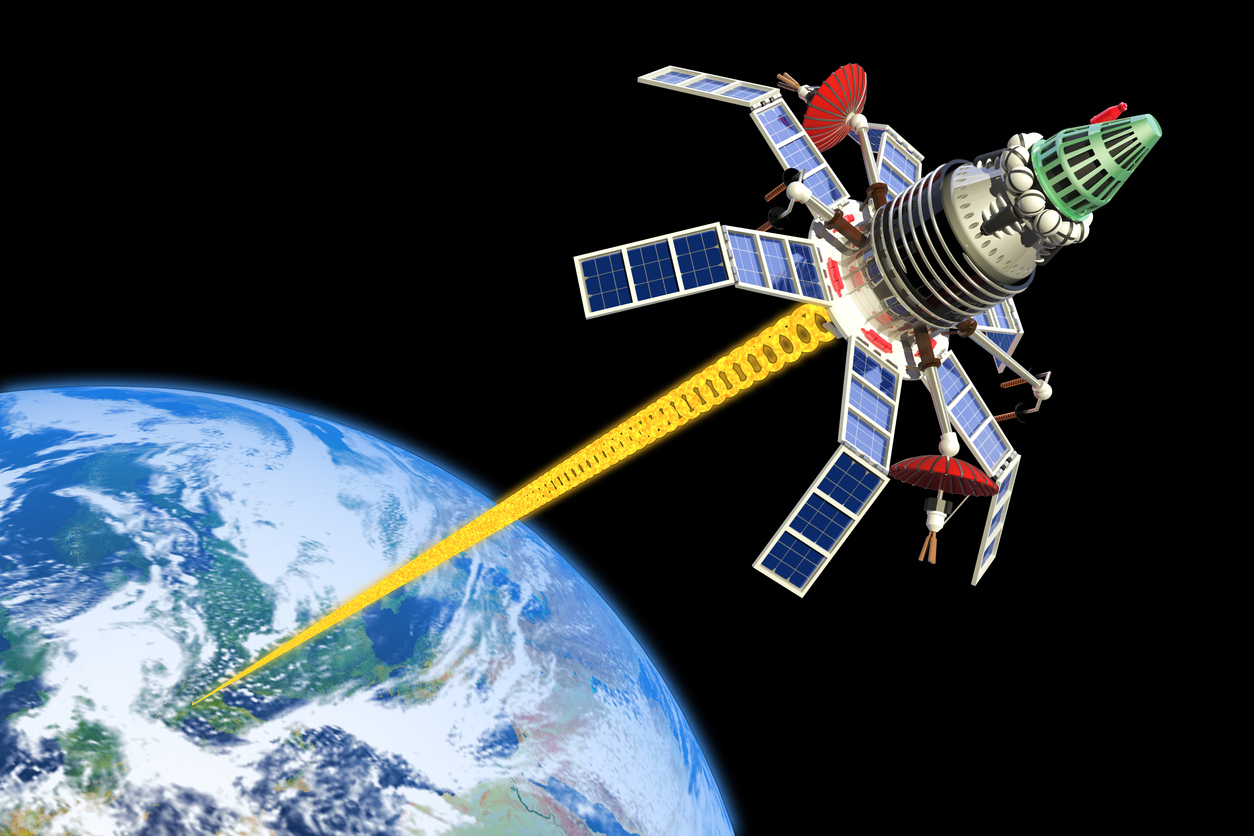U.S. scientists have shown it's plausible to power the Earth from solar panels in space


Rep. Marjorie Taylor Greene (R-Ga.) was widely mocked and criticized for having suggested Jewish-run space lasers might be responsible for California's wildfires. But it turns out the technology she flagged — orbiting panels that beam solar energy to Earth — does exist, at least in prototype form, CNN reports. Only instead of the Rothschilds, the Pentagon controls the technology, and instead of destroying California's forests and homes, Photovoltaic Radiofrequency Antenna Modules (PRAMs) could provide emergency power during natural disasters.
The Pentagon sent a prototype PRAM into orbit in May 2020 aboard its secretive X-37B unmanned drone. The 12-inch-square photovoltaic panel showed it's capable of producing 10 watts of energy, or enough to power an iPad, to transmit back to Earth, Paul Jaffe at the U.S. Naval Research Lab in Washington, D.C., told CNN. The advantages of putting solar panels in space include constant sunlight, more powerful light including blue waves filtered out by the Earth's atmosphere, and the ability to direct power to where it's needed most at any given time.
"You can send power to Chicago and a fraction of a second later, if you needed, send it instead to London or Brasilia," Jaffe said. If enough solar panels are grouped together, it could provide enough clean electricity to power a city, he said. That would have been extremely helpful last week, Jaffe's colleague Chris DePuma told CNN last week. "My family lives in Texas and they're all living without power right now in the middle of a cold front because the grid is overloaded," DePuma said. "So if you had a system like this, you could redirect some power over there, and then my grandma would have heat in her house again."
The Week
Escape your echo chamber. Get the facts behind the news, plus analysis from multiple perspectives.

Sign up for The Week's Free Newsletters
From our morning news briefing to a weekly Good News Newsletter, get the best of The Week delivered directly to your inbox.
From our morning news briefing to a weekly Good News Newsletter, get the best of The Week delivered directly to your inbox.

Jaffe and DePuma are experimenting with sending the energy back down to Earth as microwaves, hitting the correct destination using a technique called "retro-directive beam control," where the energy beams wouldn't be transmitted until a pilot signal from the terrestrial receiver is locked in at the orbiting panels. Jaffe "also allayed any future fear that bad actors could use the technology to create a giant space laser," CNN reports.
A free daily email with the biggest news stories of the day – and the best features from TheWeek.com
Peter has worked as a news and culture writer and editor at The Week since the site's launch in 2008. He covers politics, world affairs, religion and cultural currents. His journalism career began as a copy editor at a financial newswire and has included editorial positions at The New York Times Magazine, Facts on File, and Oregon State University.
-
 Political cartoons for January 6
Political cartoons for January 6Cartoons Tuesday’s political cartoons include wrongful deportation, a monster under the surface, and more
-
 Why don’t humans hibernate?
Why don’t humans hibernate?The Explainer The prospect of deep space travel is reigniting interest in the possibility of human hibernation
-
 Would Europe defend Greenland from US aggression?
Would Europe defend Greenland from US aggression?Today’s Big Question ‘Mildness’ of EU pushback against Trump provocation ‘illustrates the bind Europe finds itself in’
-
 Blue Origin launches Mars probes in NASA debut
Blue Origin launches Mars probes in NASA debutSpeed Read The New Glenn rocket is carrying small twin spacecraft toward Mars as part of NASA’s Escapade mission
-
 Dinosaurs were thriving before asteroid, study finds
Dinosaurs were thriving before asteroid, study findsSpeed Read The dinosaurs would not have gone extinct if not for the asteroid
-
 SpaceX breaks Starship losing streak in 10th test
SpaceX breaks Starship losing streak in 10th testspeed read The Starship rocket's test flight was largely successful, deploying eight dummy satellites during its hour in space
-
 Rabbits with 'horns' sighted across Colorado
Rabbits with 'horns' sighted across Coloradospeed read These creatures are infected with the 'mostly harmless' Shope papilloma virus
-
 Lithium shows promise in Alzheimer's study
Lithium shows promise in Alzheimer's studySpeed Read Potential new treatments could use small amounts of the common metal
-
 Scientists discover cause of massive sea star die-off
Scientists discover cause of massive sea star die-offSpeed Read A bacteria related to cholera has been found responsible for the deaths of more than 5 billion sea stars
-
 'Thriving' ecosystem found 30,000 feet undersea
'Thriving' ecosystem found 30,000 feet underseaSpeed Read Researchers discovered communities of creatures living in frigid, pitch-black waters under high pressure
-
 New York plans first nuclear plant in 36 years
New York plans first nuclear plant in 36 yearsSpeed Read The plant, to be constructed somewhere in upstate New York, will produce enough energy to power a million homes
